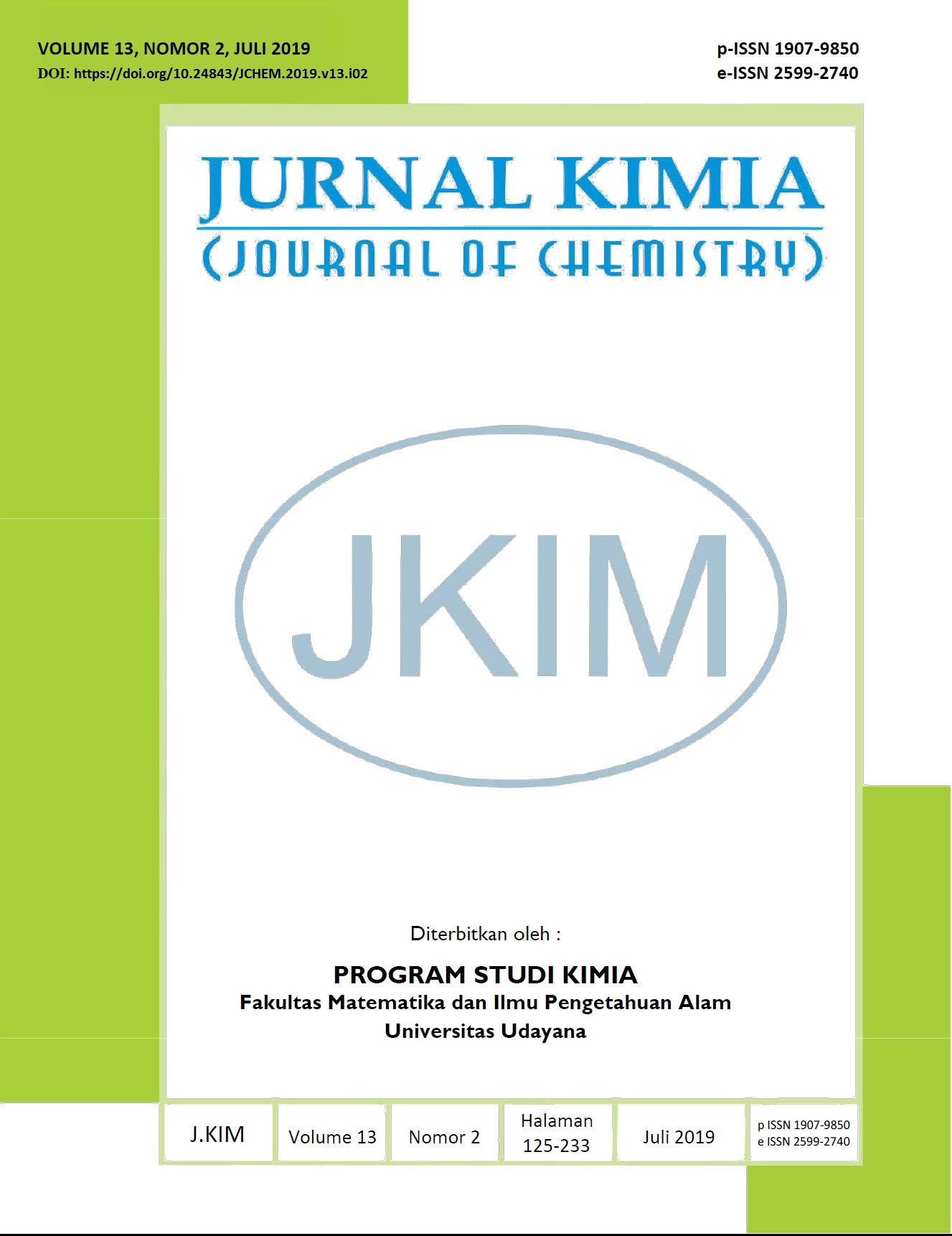POTENSI EKSTRAK DAUN CENDANA (Santalum album L.) SEBAGAI SENYAWA PENGHAMBAT JAMUR Candida albicans
Abstract
Diseases caused by C. albicans (C. albicans) such as mouth, skin and nail diseases are still commonly found in Indonesia. This study aimed to examine antifungal activity of n-hexane, chloroform, and n-butanol extracts of Santalum album (S.album) leaves in inhibiting the growth of C. albicans and to determine the minimum inhibitory concentration of the most active extract as well as to identify their active compounds. Antifungal activity testing was carried out using disc diffusion method and identification of active compound was performed using LC-MS /MS. Extraction of 1 kg sandalwood leaf powder with methanol yielded 86.80 gram of crude methanol extract. Partiiton 40 gram of the crude methanol extract with n-hexane, chloroform, and n-buthanol gave 12.60, 6.20 and 1.20 g of extracts respectively. The antifungal activity test results revealed that n-hexane extract was the most active in inhibiting the growth of C.albicans with inhibitory diameter of 13 mm as compared to chloroform 9 mm and n-buthanol 8 mm. The active n-hexane extract which is active as an antifungal is then made various variations to obtain a minimum inhibitory. The n-hexane extract, at concentrations of 95, 90 and 85% inhibited the growth of C.albican with inhibitory diameter of 12.04, 15.8, and 13 mm respectively. While at the concentarion of 80 % showed minimum inhibitory diameter of 9.32 mm. Based on analysis mass spectra of two peaks of LC-MS / MS chromatogram with MassLynx V4.1 programe and Chemspider web database suggested the presence of benzofurazan and picolylamine compounds which may contribute to the antifungal activityof n-hexane extract of S.album.
Keywords: Sandalwood (Santalum album L.), antifungal, C. albicans, n-Hexane, LC-MS/MS
Downloads

This work is licensed under a Creative Commons Attribution 4.0 International License






